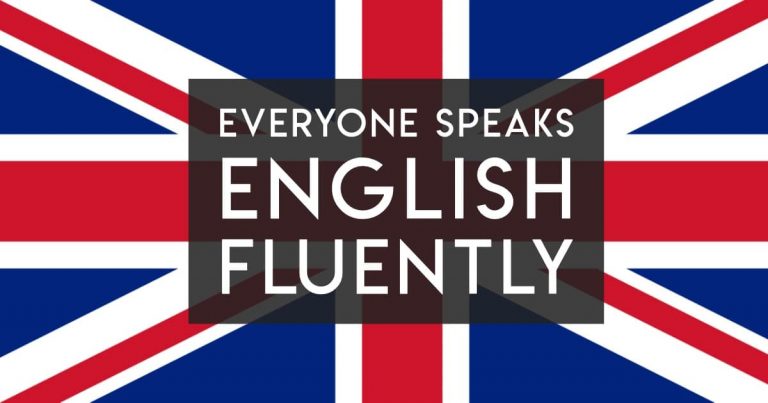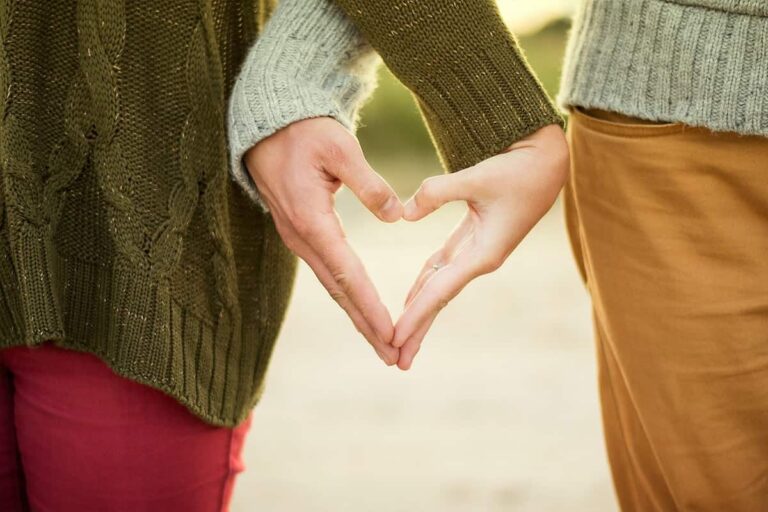10 Best Ways to Say Hello in Arabic and How to Respond
Are you just starting on your Arabic language learning journey? Maybe you’re traveling to an Arabic-speaking country and want to pick up some fun ways to connect with the locals.
But even if you’ve been learning Arabic for a while, you might be surprised to see some of the basic greetings used by other Arabic speakers around the world.
Travelling to new Arabic-speaking countries or speaking to people from different places, I’m always surprised by the diverse ways to say hello in Arabic dialects.
As in any other culture, it’s polite to greet people you know, even casually, the first time you see them. Arabs say “hello” in various ways, and each greeting has a corresponding response.
Usually, hello in Arabic is expressed with a warm smile followed by questions about other’s health and well-being. Let’s get into all of the different and colorful greetings that Arabic has to offer.
Read next: 11 Essential Ways to Say Goodbye in Arabic
Hello in Arabic at a Glance
Arabic | English |
Hello | |
You are welcome | |
May peace be upon you | |
Hello (casual) | |
Good morning | |
Good evening | |
Hello (formal) | |
How are you? (Saudi) | |
How are you? (Levantine) | |
How are you? (Egyptian) |
Contents
How to Say Hello in Arabic
MarHaba(n) مرحبا
The word marHaba(n) مرحبا corresponds to “hello” or “hi” in most places.
Note: You pronounce it marHaban, the technically correct pronunciation, in some places, and without the -n ending, marHaba, in others. Don’t stress too much and learn from context.
You can use marhaba as a friendly, casual greeting, commonly used in most Arabic countries. It can be used in both a formal and informal context.
The response to marHaba varies according to the context, level of familiarity, and dialect. Some variants to marHaba are “MarHabteen” مرحبتين (two hellos), “maraaHeb” مراحب (many hellos).
Greeting
- marHaba مرحبا – hello
- marHabteen مرحبتين – two hellos
- maraaHeb مراحب – many hellos
Reponse
- marHaban bik مرحبا بك – hello to you (addressing a male)
- marHaban biki مرحبا بكي – hello to you (addressing a female)
- marHaban bikum مرحبا بكم – hello to you (addressing a group)
Ahlan wa sahlan أهلاً وسهلاً
Arabs love to give visitors a warm welcome to their home or work place, and may repeat ahlan wa sahlan أهلاً وسهلاً over and over, meaning “you’re welcome here”.
(Note: this is different to “you’re welcome”, the phrase you’d use in response to someone thanking you.)
To respond to ahlan wa sahlan أهلاً وسهلاً, you can reply in the following ways: If they are male, you can respond to him by saying ahlan biik أهلا بيك, and if they’re a female, you would respond with ahlan biiki أهلاً بيكي. If you’re talking to multiple people, you would respond in the plural form: ahlan biikum أهلاً بيكم.
Arabs repeat such phrases to break the ice and to make guests feel at home.
Greeting
- ahlan wa sahlan أهلاً وسهلاً – You are welcome here
Response
- ahlan biik أهلا بيك – Welcome to you (addressing a male)
- ahlan biiki أهلاً بيكي – Welcome to you (addressing a female)
- ahlan biikum أهلاً بيكم – Welcome to you (addressing a group)
As-salamu ‘alaikum السلام عليكم
One of the most fundamental Arabic greetings is as-salamu 'alaikum السلام عليكم , which means “may peace be upon you”. This is a very common way of saying hello in Arabic.
This is the standard Muslim greeting and it is used all around the world in various Muslim majority communities including Pakistan and Zanzibar.
Although as-salamu ‘alaikum is religious in context and associated with Islam, you do not need to be a Muslim to use it. It is usually the default greeting in many countries and is as commonly used as “hello” is in English speaking countries.
Greeting people with as-salamu ‘alaikum can also be a great way to narrow cultural gaps that exist and show respect for your host’s religion and culture.
As usual, in Arab culture, the response will be more elaborate than the greeting itself. The typical response is wa-‘alaikum as-salaam وعليكم السلام which means “and upon you peace”.
If you really want to impress Arabic speakers, you can try out the longer version of this response – wa ’alaikum as-salaam wa raHmat alaah wa barakatu وعليكم السلام ورحمة الله وبركاته. This means may peace, God’s mercy, and blessings be upon you, too.
Greeting
- as-salamu 'alaikum السلام عليكم – may peace be upon you
Response
- wa-'alaikum as-salaam وعليكم السلام – and upon you peace
- wa ’alaikum as-salaam wa raHmat alaah wa barakatu وعليكم السلام ورحمة الله وبركاته – may peace, God’s mercy, and blessings be upon you, too
Read next: 50+ Basic Levantine Arabic Phrases and Words to Sound Local
Salam سلام
The phrase salaam سلام is an informal greeting, and is kind of a way to say “hi” in Arabic.
You use salaam between friends and young people who are more flexible with the language and they greet each other in a friendly way, sometimes waving their hands.
Here, the response will be more casual and warm, you will hear phrases like ya hala يا هلا (you’re welcome), hala wa ghala هلا وغلا (you’re welcome and precious to me) and hala wallaah هلا والله (you’re really welcome).
Greeting
- salaam سلام – hi/hey
Response
- ya hala يا هلا – you’re welcome
- hala wa ghala هلا وغلا – you’re welcome and precious to me
- hala wallaah هلا والله – (you’re really welcome).
Hayak allaah حيَّاك الله
Saying Hayak allaah حيَّاك الله is a formal way to say hello in Arabic that is used often in Gulf countries. It means may God give you a long life.
Similar to as-salamu ‘alaikum, this greeting has religious connotations but is used often in Gulf countries, so you should feel free to add that to your repertoire if you feel comfortable doing so.
Use Hayak allaah حيَّاك الله when addressing a male, Hayaki allaah when addressing a female, and Hayakum allaah to address a group.
Responses to this greeting are allaah yiHeek الله يحييك which means may God give you a long life too.
It is sometimes shortened to Hayak addressing a male, Hayaki addressing a female, and Hayakum addressing a group.
Greeting
- Hayak allaah حيَّاك الله – May God give you a long life (addressing a male)
- Hayaki allaah حيَّاكي الله – (addressing a female)
- Hayakum allaah حيَّاكم الله – (addressing a group)
Reponse
- allaah yiHeek الله يحييك – May God give you a long life too
Read next: Learn Arabic Quickly — The Ultimate 90-Day Plan
Arabic Greetings for Different Times of Day
Sabah al-kheir صباح الخير
Sabah al-kheir صباح الخير is a common start of day greeting that means good morning. This can be used anytime before noon. It can be used both in a formal and informal setting.You can respond to Sabah al-kheir in several ways, depending on your mood. The most common reply is SabaH an-nur صباح النور meaning “morning full of light”.
In Egypt, you can respond with SabaH il-full صباح الفل , which means “morning of jasmine” (not “morning of beans”, as I first misunderstood! – ed) or SabaH il-ward صباح الورد “morning full of roses”.
In the Gulf countries, sometimes, you will hear “SabaHak bilkheer” صبحك بالخير “may God give you a morning full of goodness” to address a male, “SabaHik bilkheer” صبحِك بالخير to address a female, and “SabaHkum bilkheer” صبحكم بالخير to address a group.
Greeting
- Sabah al-kheir صباح الخير – good morning
Reponse
- SabaH an-nur صباح النور – morning of light
- SabaH il-full صباح الفل – morning of jasmine (Egypt)
- SabaH il-ward صباح الورد – morning of roses
Read next: 4 Common Ways to Say Good Morning in Arabic
Masaa’ al-kheir مساء الخير
masaa’ al-kheir مساء الخير means good evening, but it is used both in the afternoon and in the evening.Similar to sabah al-kheir, it is used in both formal and informal situations. The response to this greeting mirrors the way you respond to sabah al-kheir. Its equivalent is masaa’ an-nur مساء النور — evening of light. You can use this response during the afternoon since there isn’t really a direct Arabic equivalent for good day.
As in the way you say good morning, in Gulf countries, you will also hear masaak bilkheer مساك بالخير to address a male, masaaki bilkheer to address a female, and masaakum bilkheer to address a group.
Greeting
- masaa’ al-kheir مساء الخير – good evening
Reponse
- masaa’ an-nur” مساء النور – evening of light
Read next: 5 Useful Ways of Saying Good Night in Arabic
Common Arabic Greeting – How are you?
While asking how are you isn’t exactly saying hello, it’s a common follow up question in the Arab-speaking world. It is polite to ask about one’s health or to ask how things are going. Various Arabic dialects have a different spins on how to ask this. Let’s take a quick look at a few.
Read next: 12 Ways to Say How Are You in Arabic + Responses
Saudi – Kif haalak? كيف حالك؟
kif haalak? كيف حالك؟ means how is your health and is similar to the way we say “how are you?” in English. It is commonly used after marhaba or as-salamu Alaikum. When addressing a male, you’d use kif haalak. For a female, you’d use keef haalik.To respond, you’d say ana bikheer, shukran! أنا بخير، شكراً, which means “I’m fine, thanks!”.
And in the same way you’d converse in other languages, it’s proper etiquette to also ask how they’re doing. So you’d ask them wa inta وأنت, if they’re male, and wa inti وأنتِ if they’re a female. This simply means “and you?”
Greeting
- kif haalak? كيف حالك؟ – How are you? (addressed to male)
- kif haalik? كيف حالك؟ – How are you? (addressed to female)
Reponse
- ana bikheer, shukran! أنا بخير، شكراً – I’m fine, thanks!
- wa inta وأنت – And you? (addressed to male)
- wa inti وأنتِ – And you? (addressed to female)
Read next: How to Learn Modern Standard Arabic (MSA) and Why — And What to Ignore
Levantine – Kifak? كيفك؟
The phrase kifak? كيفك؟ is a more casual, shortened version from the Saudi dialect way of saying “how are you”.
The phrase kif haalak (to male) turns into kifak and kif haalik (to female) turns into kifik.
To respond, can say mneeH منِيح which means “I’m good” or tamaam تَمَام which means “I’m great”.
Greeting
- kifak? كيفك؟ – How are you? (addressed to male)
- kifik? كيفك؟ – How are you? (addressed to female)
Reponse
- mneeH منِيح – I’m good
- tamaam تَمَام – I’m great
Egyptian – Izayyak? ازيك؟
izayyak? ازيك؟ is a uniquely Egyptian way to ask someone how they are.If you say izayyak in other Arabic-speaking countries, they will certainly be able to understand you and they will know immediately you’ve studied Arabic in Egypt.
Use izayyak when speaking to a male and use izayyik when speaking to a female.
Some common responses to izayyak are kwayyis كوَيِّس which means I’m good and kullu tamaam كلّو تَمَام which means everything’s good.
Greeting
- izayyak? ازيك؟ – How are you? (addressed to male)
- izayyik? ازيك؟ – How are you? (addressed to female)
Reponse
- kwayyis كوَيِّس – I’m good
- kullu tamaam كلّو تَمَام – Everything’s good.






